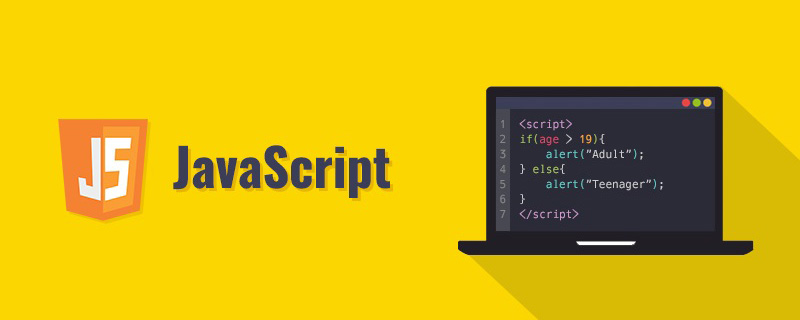
This article brings you relevant knowledge aboutJavaScript, which mainly introduces the related issues pointed by this. This means "this, current" and is a pointer variable. It dynamically points to the running environment of the current function. Let's take a look at it. I hope it will be helpful to everyone.

【Related recommendations:JavaScript video tutorial,web front-end】
In js, this means "this; current",is a pointer variable, which dynamically points to the running environment of the current function.
When the same function is called in different scenarios, the pointer of this may also change, but it will always point to the real caller of the function in which it is located; if there is no caller , it points to the global object window.
Ordinary function: Regarding this, whoever calls it points to whoever calls it. If there is no caller, it points to the global object window.
Arrow function: This of the arrow function points to the object used in the function scope.
In the globalscope, this always points to the global object window, regardless of whether it is in strict mode or not!

##congsole.log()The complete writing method iswindow.console.log(), windowcan be omitted ,windowcalled theconsole.log()method, so this points to window at this time.

window.test()Call function this points to window. Therefore, instrict mode, when we call the code, we must strictlywrite the object of the called function, and no omissions or abbreviations are allowed.

window.test()When calling function objects, this points to window.
This in the internal methods of the object points to the object that calls these methods, that is,Whoever calls it points to.
1. One-level object:

obj.skill()method, The return value isMengya, indicating that this points to obj at this time.
2. Second-layer object:

obj.obj2.skill2 (), the return value isLuban, indicating that this in theskill2()method points to obj2.
Summary:
this pointer is only related to the object that calls the function.
the this of the internal method points to the objectclosest to the called function.
Arrow function: this Points to the object used in the function scope.
There is no this and arguments in the arrow function, there really is none!
The arrow function does not have its own this pointer, it will capture thedefinition, and inherit it This this value,points to the objectwhere it is currently defined. The this point of the arrow function is determined when it is defined, andwill never change thereafter. Even if you usecall(),apply(),bind()and other methods to change this pointer, it is not possible.
Example 1:

Example 2:

Since the show function is an arrow function, it cannot be bound to itself Define this, so find its upper-level scope. If the parent scope is still an arrow function, look up again, layer by layer, until you reach the point of this.
window.show()The return value is window, so this points to window at this time;
window.obj.show(), objis an object, not an arrow function, so it stops when it finds this point, and this is bound to obj.window calls obj, so this in obj also points to window.
This in the constructor points to Example.

As can be seen from the above figure,this in the constructor points to the instancecreated under the constructor.
this value is in an inheritance mechanism, still Itpoints to the objectit originally belongs to, not the object it belongs to when it is found on the prototype chain.
call(a, b, c)method receives three parameters, the first one is pointed to by this, the second one, and the three are the actual parameters passed to the function , which can be any data type such as numbers, strings, arrays, etc.Example:
//定义函数function fn(n1,n2){ console.log(this); console.log(n1,n2)}//调用call()方法fn.call();//=>this:window;let obj = {fn:fn};fn.call(obj); //=>this:obj;n1,n2:undefinedfn.call(1,2);//=>this: 1;n1=2,n2=undefined;fn.call(obj,1,2);//=>this: obj;n1=1,n2=2; //Call方法的几个特殊属性 //非严格模式下fn.call(undefined);//this=>windowfn.call(null);//this=>window //严格模式下"use strict"fn.call(undefined);//this=>undefinedfn.call(null);//this=>null
apply(a, [b])is basically the same as call.The only difference is the parameter passing method. apply puts the parameters that need to be passed tofn()into an array. (or array-like), although it is written as an array, it is equivalent to passing it tofn()one by one.
//call()的传参方式 fn.call(obj, 1, 2);//apply()的传参方式fn.apply(obj, [1, 2]);
Example:
//apply方法的使用和call方法基本相同,唯一的区别是,apply方法传参要求是数组类型的,数组内可以任意形式的数据 function fn (n1,n2){ console.log(this); console.log(n1,n2) console.log(arguments)}let obj = {fn:fn}; //调用apply()方法 fn.applay(abj,[1,2]);fn.applay(abj,1,2); //报错 fn.applay(abj,[11,'apply',{a:123}]); //注意第二个参数必须是数组,否则会报错
bind (a, b, c): The syntax is exactly the same as call. The difference is whether to execute immediately or wait for execution. bind is not compatible with IE6~8
The only differencebetween bind and call is that call directly changes the direction of function test, whilebindgenerates a new functiontest2(), this function changes the pointer.
//call()方法:改变fn中的this,并且把fn立即执行fn.call(obj, 1, 2); //bind()方法:改变fn中的this,fn并不执行fn.bind(obj, 1, 2);
Example:
//bind和call方法调用形式类似,但是原理完全不同 fn.call(obj,10,20);//=>fn先执行,将fn内的this指向obj,并且把参数10,20传递给fn fn.bind(obj,10,20)//bind是先将fn中的this指向obj,并且将参数10,20预先传递给fn,但是此时的fn并没有被执行,只有fn执行时this指向和传递参数才有作用 fn.bind(obj,10,20);//=>不会有任何输出 fn.bind(obj,10,20)();//=>调用后才会有输出 //=>需求:点击box这个盒子的时候,需要执行fn,并且让fn中的this指向obj oBox.onclick=fn; //=>点击的时候执行了fn,但此时fn中的this是oBox oBox.onclick=fn.call(opp); //=>绑定事件的时候就已经把fn立即执行了(call本身就是立即执行函数),然后把fn执行的返回值绑定给事件 oBox.onclick=fn.bind(opp); //=>fn.bind(opp):fn调取Function.prototype上的bind方法,执行这个/* * function(){ * fn.call(opp); * } */ oBox.onclick=function(){ //=>this:oBox fn.call(opp); }
[Related recommendations:Same points:
call, apply and bind are all public internal methods of JS functions. They all reset the this of the function and change the execution of the function.
Difference:
bind creates a new function, while call and aplay are used to call functions;
- call and apply have the same function, except that the parameters provided by call for the function are listed one by one, while the parameters provided by apply for the function are an array
JavaScript video tutorial、webfrontend】
The above is the detailed content of One article to understand the this pointing problem in JavaScript. For more information, please follow other related articles on the PHP Chinese website!